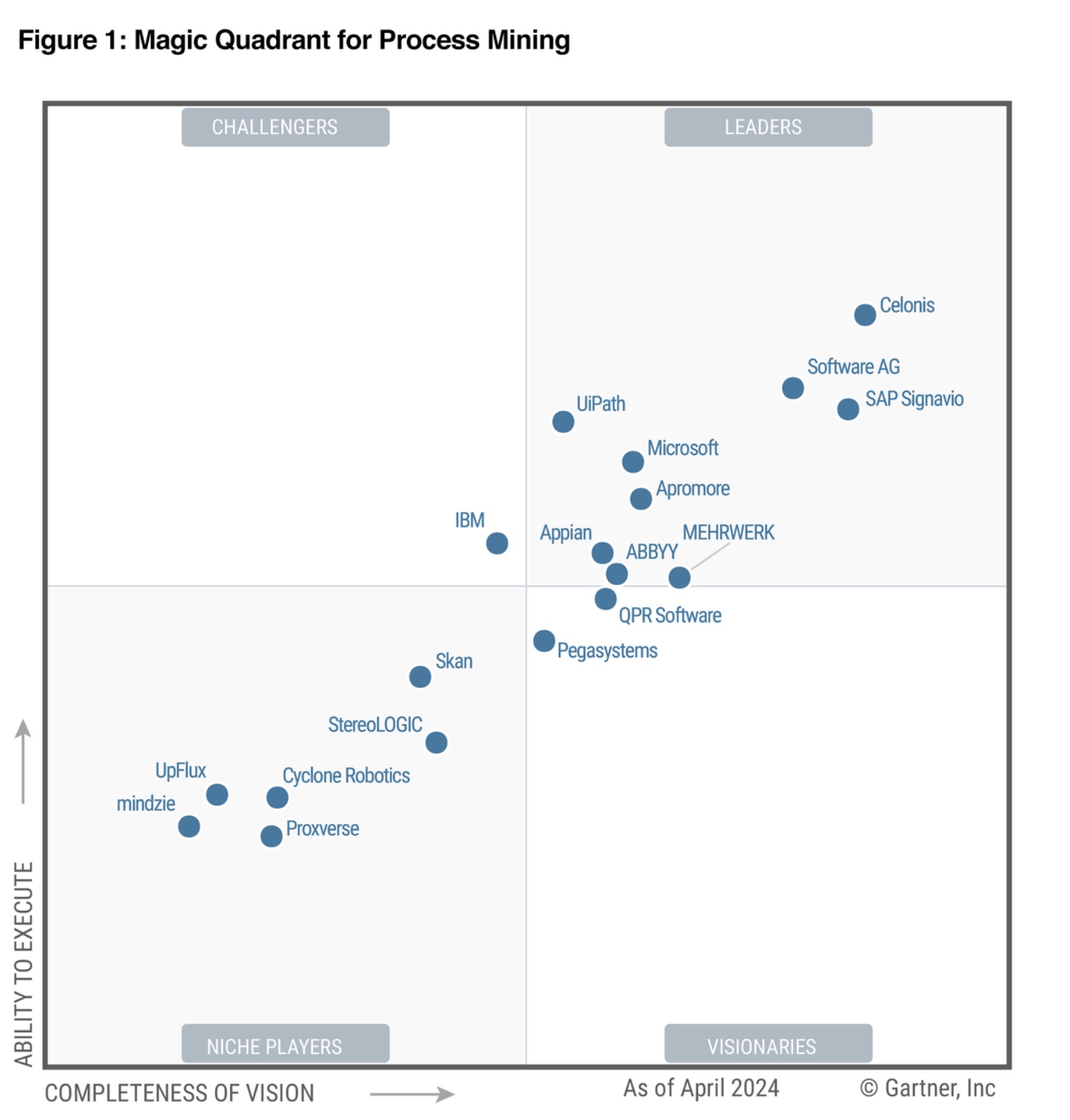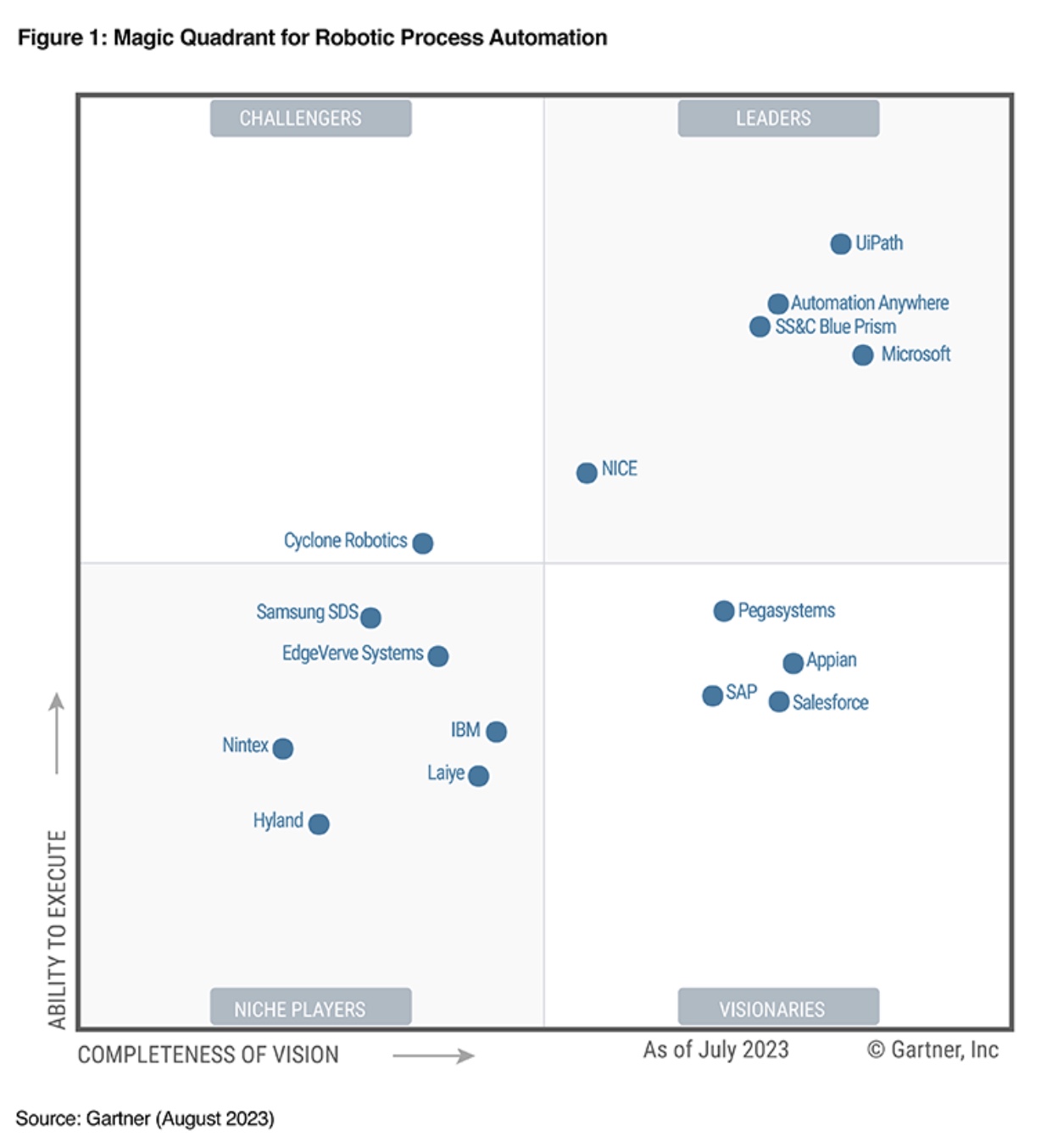
Organizations are increasingly automating work to gain efficiency and productivity. To reap these benefits, they must first determine what types of automation solutions can meet their needs and goals.
Dans le monde digital d’aujourd’hui, les entreprises se tournent vers l’automatisation pour améliorer l’efficacité et la productivité. Cet article explore les nuances de l’intégration de l’Intelligence Artificielle (IA) dans l’Automatisation des Processus Métier (BPA), en la comparant à l’Automatisation des Processus Robotiques (RPA) pour offrir une vue d’ensemble complète du potentiel de l’automatisation. Nous examinons les capacités transformantes de l’IA en matière d’apprentissage automatique, de traitement du langage naturel et de technologies interactives pour automatiser des flux de travail complexes, optimiser la prise de décision et personnaliser les interactions avec les clients.
Choosing Between RPA and BPA for Organizational Efficiency
When identifying tasks that could be automated to improve accuracy and efficiency, RPA stands out for its ability to replicate specific, routine tasks previously performed by humans. Conversely, BPA offers a broader solution, aiming to automate and optimize entire organizational processes. While RPA focuses on task-level automation, BPA seeks to transform complex, multi-step processes.
Both technologies aim to reduce manual workload, but they differ in scope and application, highlighting the importance of choosing the right automation strategy to meet specific organizational needs.
Navigating Automation
RPA (Robotic Process Automation) and BPA (Business Process Automation) both aim at enhancing efficiency, but they differ in their approach and use of AI. RPA automates specific tasks based on set rules, without AI’s cognitive abilities, to replicate routine human actions such as data entry. In contrast, BPA, often leveraging AI, focuses on end-to-end process automation, integrating with various technologies to optimize workflows comprehensively. AI’s role in BPA allows for processing complex data, learning from outcomes, and making informed decisions, enhancing the scope and effectiveness of automation beyond the capabilities of RPA alone.
For example, in insurance companies, BPA can improve claims processing by automating the entire workflow, while RPA is best suited for automating discrete tasks within this process, like transferring data between databases. Essentially, RPA focuses on task-level automation without AI’s learning capabilities, whereas BPA leverages AI for comprehensive process automation, integrating seamlessly with existing technologies to improve overall efficiency and facilitate digital transformation at a strategic level.
Stratégies pour Optimiser l’Efficacité des Flux de Travail dans l’Automatisation des Processus Métier
Pour optimiser les processus métier grâce à l’automatisation, il est crucial d’adopter une approche structurée qui traite à la fois le flux de travail et les rôles des personnes impliquées. Cela implique une analyse minutieuse du processus en question, visant à :
- Identifier toutes les tâches administratives entourant le processus, afin de garantir une compréhension complète de sa portée.
- Décrire les flux de travail des individus impliqués, pour saisir la séquence des activités et leurs interdépendances.
- Repérer les opportunités d’amélioration de ces flux de travail, en se concentrant sur les gains d’efficacité et les domaines potentiels d’automatisation.
Une telle revue systématique ouvre la voie à une automatisation efficace des processus, créant ainsi les conditions pour des améliorations significatives de la productivité et de l’efficacité opérationnelle.
Evaluating Automation Strategies with ProActys
In the evolving landscape of digital transformation, businesses stand at a crossroads between Robotic Process Automation (RPA) and Business Process Automation (BPA). ProActys emerges as a strategic ally, guiding organizations through the complex decision-making process.
By assessing the complexity of processes and the pivotal role of data in decision-making, ProActys helps clients identify the most beneficial automation strategy. Their expertise in understanding the nuances of both RPA and BPA ensures that the chosen solution not only meets the current needs but also aligns with long-term digital transformation goals.
ProActys’s approach emphasizes scalability and seamless integration, preparing businesses for future growth and technological advancements.

Assessing Organizational Readiness
Before embarking on an automation journey, assessing organizational readiness is crucial. ProActys offers comprehensive guidance to businesses, ensuring they are primed for the transformative shift automation brings. This involves evaluating the current technological infrastructure, process maturity, and the workforce’s adaptability to change.
We assist our clients in navigating potential hurdles, such as integration challenges and concerns about job displacement, providing strategies for smooth transition and adoption. Our expert advice on training and support mechanisms further empowers employees, fostering an environment of innovation and continuous improvement.
With ProActys, businesses are not just adopting automation; they are embracing a future of unparalleled efficiency and competitive advantage. Finally, as AI often creates fears about job loss, it is crucial to clearly communicate that automating business processes can open up new opportunities for employees. It is up to the organization to dispel ambiguities surrounding AI adoption and to promote the benefits of business process automation to the workforce.

Leveraging AI for BPM
Understanding the problem you want AI to solve is essential for BPM to bring real added value to the organization and its employees.
It requires a thorough analysis of business problems to offer meaningful solutions related to specific benefits. Organizations can form a committee to identify areas where BPM can improve efficiency, accuracy, and/or productivity, then explore the type of solution(s) that can achieve these gains. Only after thoroughly examining these factors can an AI solution be designed from scratch.
Start Small
Avoid taking on too much too soon. Identify low-hanging fruit, processes that can benefit most from automation. Since AI applications need their own data, you might start with a process where datasets are readily available. Incremental use of AI will still provide valuable feedback that you can use to scale up as needed. If data is not available, ask your teams to sort out inconsistencies in the datasets of targeted processes so that you can start with a large amount of accurate data.
Filling Gaps in Internal Capabilities
Before proceeding with full-scale AI implementation, organizations must assess their internal capabilities. Are the processes mature enough? If not, you should first focus on addressing gaps by engaging teams and leveraging existing projects.
What to Keep in Mind When Starting Business Process Automation
- Ensure that automation enhances the quality of the targeted process. Automating workflows requires a deep understanding of them, step by step. Define the entire process in precise and specific steps to ensure that the right conditions trigger actions in the correct order.
- Make sure to choose the right consultant who can guide you in selecting suitable solutions that do not pose integration issues. Integrating various tools and systems is a challenge in implementing business process automation. Only if the chosen systems “talk” to each other can you fully benefit from BPA.
- Understand the regulations you might need to comply with regarding data protection and security. Additionally, review the impact of company policy to ensure there is no abuse or compliance issue.
- Track productivity, efficiency, and/or cost-benefit of AI implementation. Establish pre-automation benchmarks to determine the extent of gains after automation. Additionally, ask employees for feedback on their experience using AI systems and their impact on their work.

Finally, as AI often creates fears about job loss, it is crucial to communicate effectively that automating business processes can offer opportunities for employees. It is up to the organization to remove ambiguities surrounding AI adoption and to demonstrate to its workforce the benefits of operational process automation.

